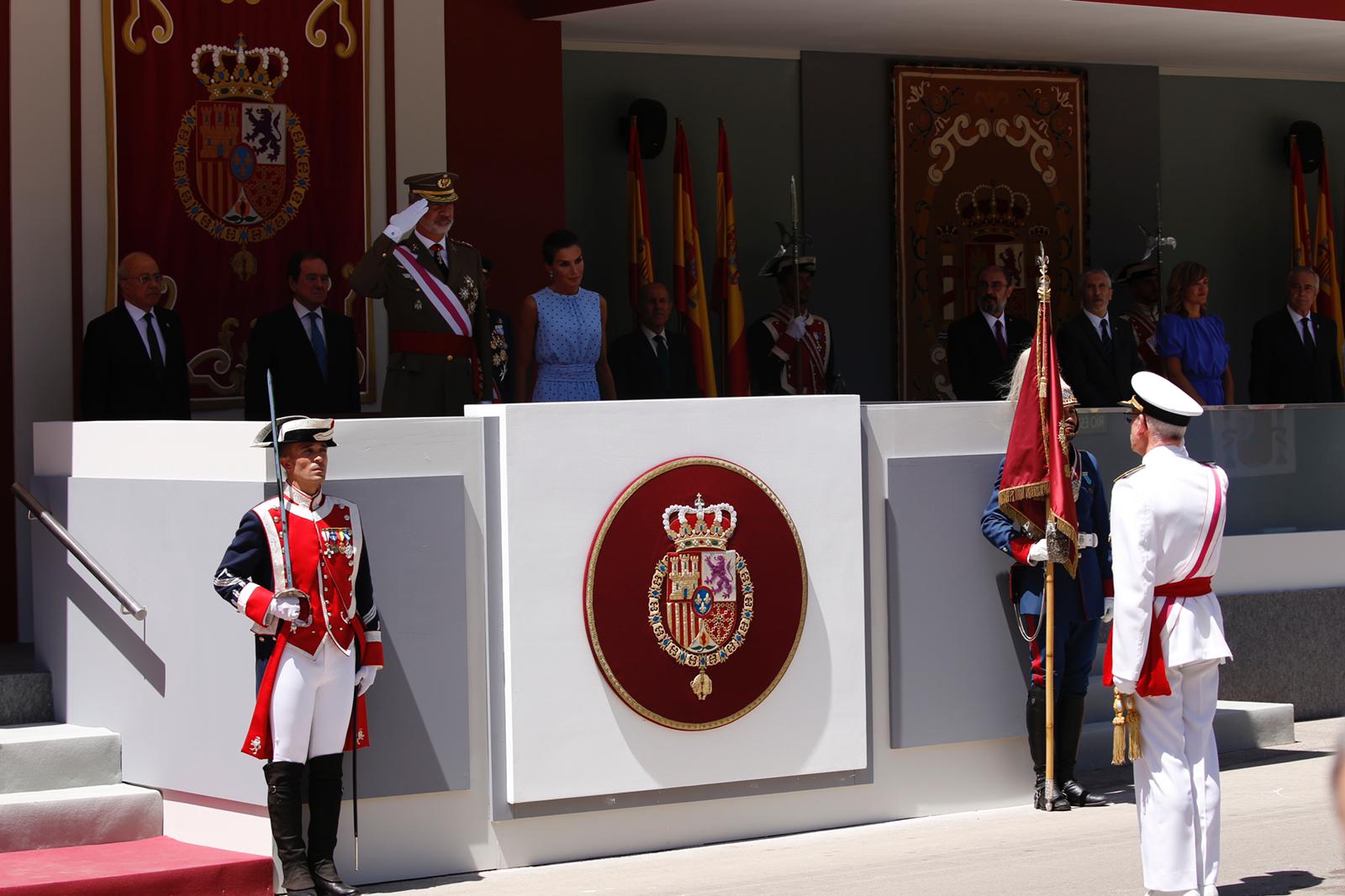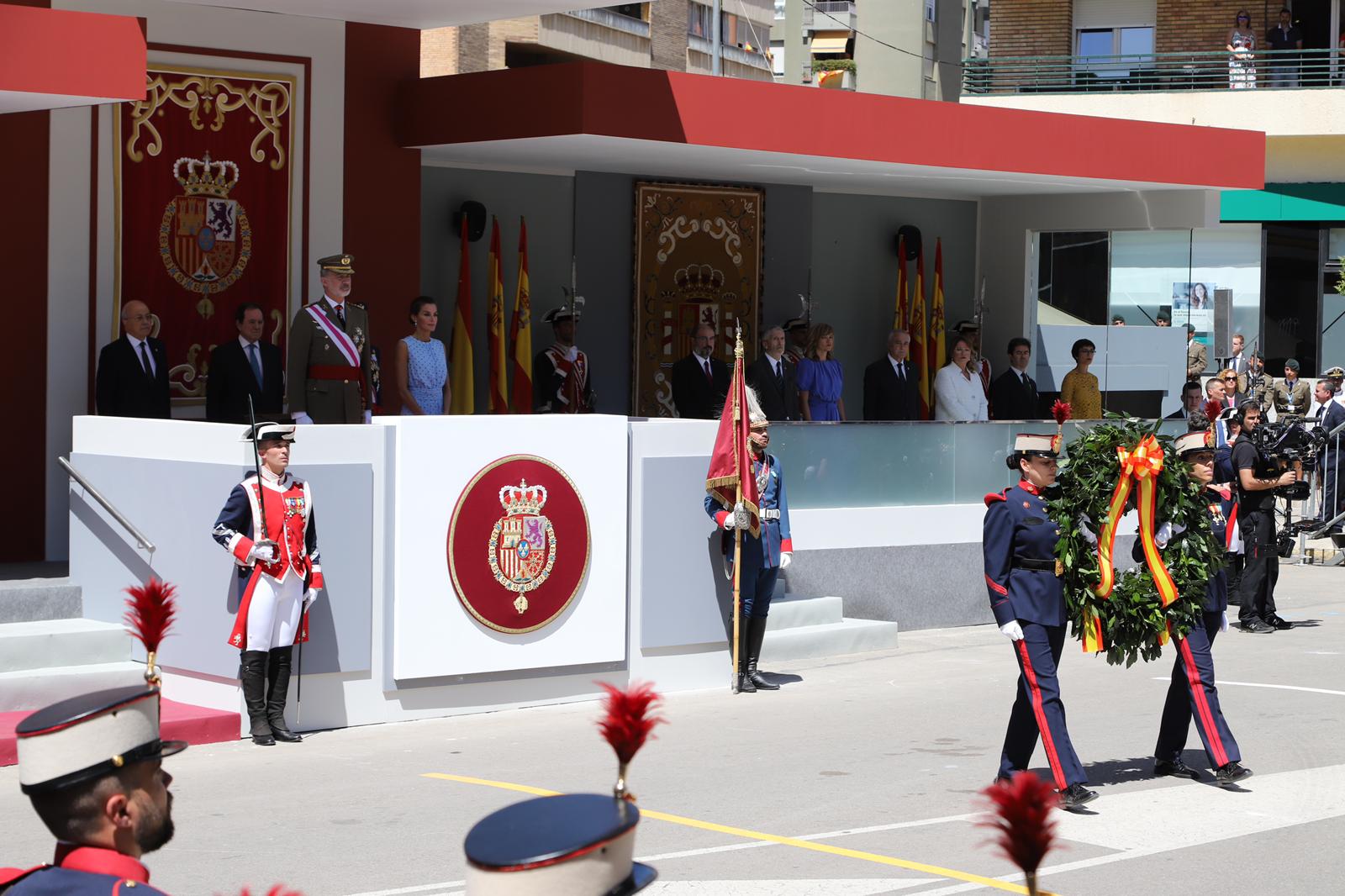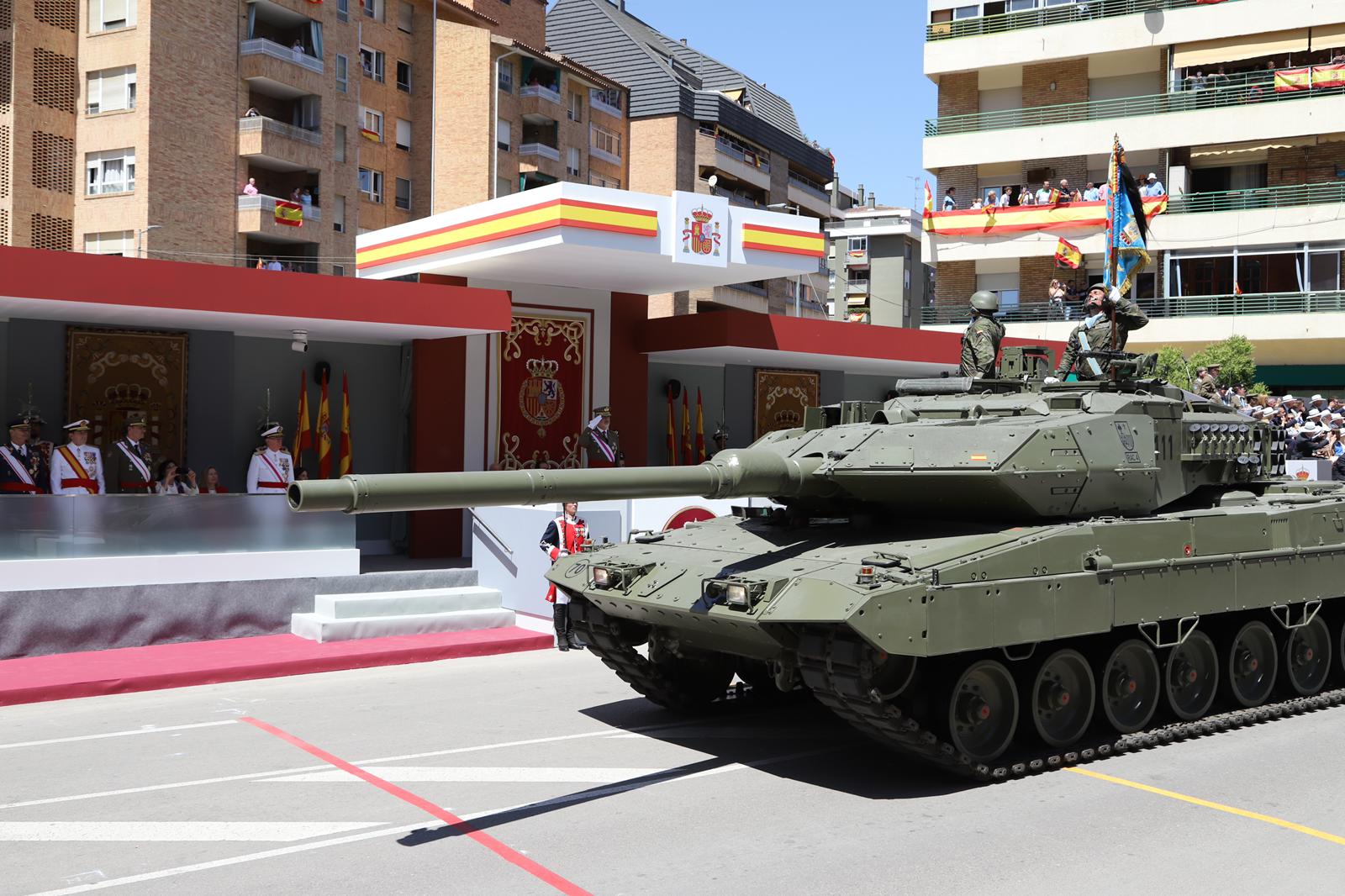
The military parade presided over by the King and Queen of Spain brings to a closing of a week of events on the occasion of DIFAS 2022
- The Chief of Defence Staff, Admiral General Teodoro Esteban López Calderón, accompanied King Felipe and Queen Letizia on the stage
The King Felipe and Queen Letizia presided over the main event of Armed Forces Day 2022 in Huesca, in which around 3,300 military personnel from the Army, Navy, Air Force and Civil Guard took part, which has recovered its massive character after two years of pandemic due to Covid-19.
This year the theme of the celebration was '1982-2022. Forty years of active participation in NATO', with just one month to go before Madrid hosts the next Atlantic Alliance summit.
The celebration of DIFAS 2022 began at the Castillejos Division Headquarters in Huesca with a meeting between the Minister of Defence, Margarita Robles, and the families of military personnel who have died in the last three years, a floral tribute and a few words from the Minister in their memory.
The main event of the day began with the arrival of the King and Queen at Avenida Juan XXIII, where they were received by the Minister of Defence, Margarita Robles, and the President of the Community of Aragon, Javier Lambán. They then greeted the Mayor of Huesca, Luis Eliseo Felipe, and the Chief of Defence Staff, Admiral General Teodoro Esteban López Calderón.
After the 21 salvoes of ordinance, the King reviewed the Royal Guard Honours Group and then saluted the civil and military authorities present at the ceremony.
A team from the Air Force Acrobatic Parachute Patrol (PAPEA) landed in front of the royal tribune carrying the National Emblem, before proceeding to the hoisting of the Flag and the act of homage to those who gave their lives for Spain, in which Felipe VI laid a laurel wreath in memory of the soldiers of all times. Finally, the "Águila" patrol made its traditional flight, marking the colours of the national ensign in the sky. On this occasion, a special remembrance was made of the 36 soldiers who have died in the line of duty since the celebration of the Armed Forces Day 2019, in Seville.
AERIAL PARADE
69 aircraft (45 aeroplanes and 24 helicopters) belonging to the Army, the Air Force, the Navy and the Civil Guard took part in the parade. A total of 17 formations flew over the skies of Huesca, led by a formation of four fighters belonging to the 15th and 23rd Wings. For the first time, the Air Force's new 'Pilatus' training aircraft, which will replace the C-101 flight training aircraft of the General Air Academy, took part in the air parade. Also on display were the D-4 maritime surveillance aircraft with which Spain participates in European Union missions to combat piracy and human trafficking networks, and 'Tiger' attack helicopters belonging to the Spanish Army.
LAND PARADE
The ground parade began with the mechanised units and 17 armoured vehicles, 97 vehicles and 40 motorbikes, as well as 'Leopard' tanks, 'Pizarro' infantry vehicles, Cavalry Exploration Vehicles (VEC), 'Lince' vehicles, Mountain Tracked Transport (TOM), Armoured Tracked Transport (TOA) and M 109 self-propelled howitzers took part. The Guardia Civil's motorised company was made up of vehicles from the Traffic Group, Nature Protection Service, Citizen Security, Reserve and Security Group, Rural Action Group, Special Explosives Disposal Group and Special Underwater Activities Group. The motorised section of the UME was made up of 11 specialised emergency vehicles, including a Volkswagen Amarok towing a rigid boat, Multi-purpose Intervention Vehicles, a fire engine and a water truck with a capacity of 11,500 litres of water, as part of its resources for fighting forest fires. Subsequently, the different groups were seen on foot, led by the Royal Guard Honours Group with its three companies: 'Monteros de Espinosa', from the Army; 'Mar Océano', from the Marine Corps; 'Plus Ultra' Squadron, from the Air Force; and the flags of the participating units. The parade ended with the passing of the mounted units, made up of the Royal Battery of the Royal Guard escort group and the Sabre Squadron of the Civil Guard.
40 YEARS IN NATO
Huesca also hosted several exhibitions during the week leading up to the celebration. Among them was one at the Palacio de Congresos commemorating Spain's 40 years of active participation in NATO, which covered, chronologically, the missions in which Spain has participated from its entry into the Atlantic Alliance to the present day.
Fotos




